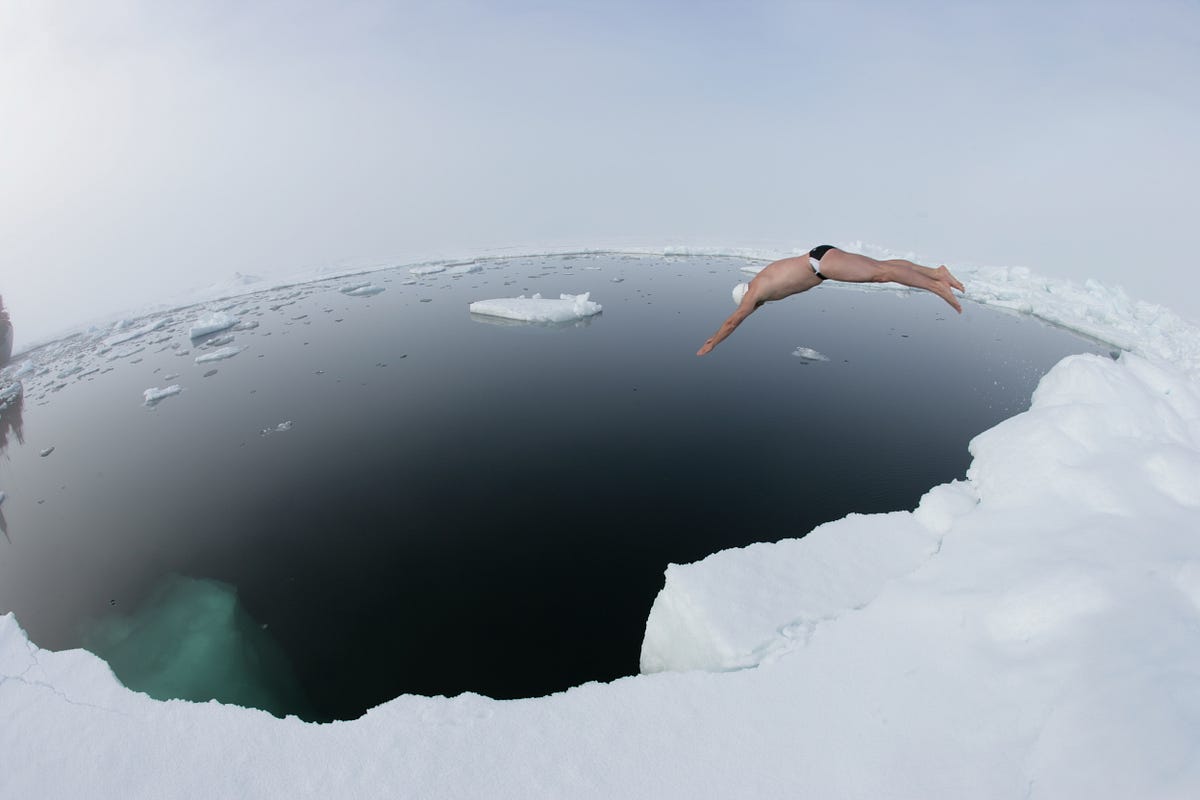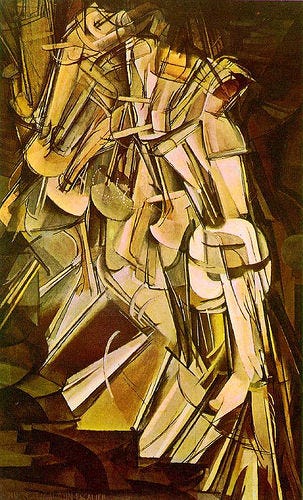
Lewis Pugh beginning a swim across the North Pole (CC BY-SA 3.0)
Which is exactly why we need to do it
Think about the most notable creative works that you’ve encountered. How many of them don’t in some way work against the received “wisdom” about what was possible, or what was commonplace at the time? How many of those works don’t swim (in some way) against the current, or forge a previously untrodden path (to further mix my metaphors)?
I believe that nearly all of the notable works in the densely woven tapestry of human creative history have done just that. That’s why we who do creative work have to continue to try to do the impossible.
Momentum Is Key
Creative work is difficult, which is why it’s so captivating to observe. One of the most difficult aspects of creative work is initiating, and then maintaining momentum. We often place hurdles in front of ourselves at the very beginning of the creative journey, as we start to work on a project. We tend to do this — either consciously or subconsciously — by getting critical much too early.
We begin assessing whether or not our desired outcome is even possible, when we’ve barely even become aware of what it is we’re trying to do. Think about what this does to us, psychologically. It places roadblocks in front of us; it impedes — nay, prevents momentum. It is like placing a hurdle 2 feet in front of the runners at the starting line of a race. Only a lucky few would be able to surmount such an obstacle so early in the race — they have no time to get into a stride. When we concern ourselves with possibility as we try to do creative work, we begin dropping hurdles in front of ourselves far too early.
Why can’t you just get started and get something — anything — down on paper? After you do that, and start your mad creative dash, then you can stop, take a breath and assess whether what you’ve been pursuing looks like it can actually be done. You may be surprised as you find yourself zig-zagging and changing direction as you work.
Creative momentum is a powerful thing. It is well within the realm of possibility to begin with one desired result in mind, but shortly after that, find yourself on an entirely different path — and moving swiftly at that. Yet, in all that momentum, you likely will not have stopped to ask yourself is this thing I’m doing possible?
In many ways, creative work is about answering that question in the affirmative. It is about being uncertain — perhaps doubtful — as to whether or not x is even possible, and yet because of that (rather than in spite of it), you press on — press forward — toward x.
Impossibilities Abound

“Nude Descending a Staircase, №2″ by Marcel Duchamp
Consider the Cubism movement in visual art. What an ambitious goal it was, to portray all of the perspectives of objects, people, and scenes simultaneously to the viewer — to stand outside of the boundaries of time and space — conveying that transcendence visually.
The impossibilities abounded! And yet, the likes of Duchamp, Braque, Picasso, and their cohorts did just that. Even if you, dear reader, are in the camp that believes they did no such thing, did they not at least show that it is (after all) possible? Didn’t they shed the necessary doubt on the impossibility that previously seemed so damned certain? Perhaps the product did not look the way that you expected it to look, but is that their problem, or yours?
Put aside your expectations of what you think a thing should be like — how it should be received. It will only get in the way of actually creating something — or at least some part of something — special.
You can revise the meaning of the terms of your expectations, and of your purpose, to fit what you did end up creating. Just say to yourself “this thing is [adjective x] and though it doesn’t appear that way, here’s why it actually is [adjective x] after all.” Now that’s creativity.
Even if the creation itself is not conventionally creative, your interpretation will be. And that kind of post-creation creativity can then further make those who consume the work that much more creative by challenging them to adopt an unconventional interpretive standpoint. It can be literally transformative. And isn’t that — after all — what creative work should be?
Did you smell was I was cooking — so to speak? Subscribe to Woolgathering — my weekly newsletter. No spamming, no selling. Just one weekly treat.